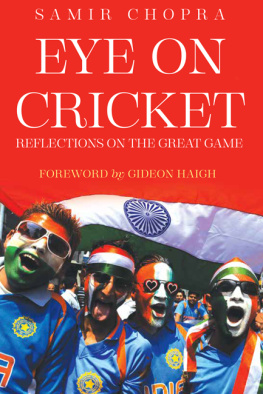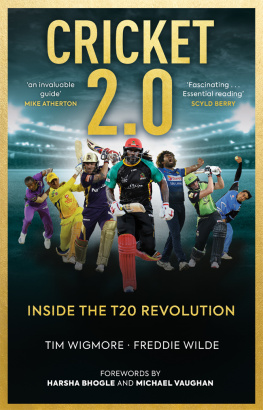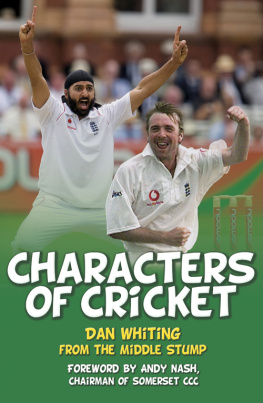First published by Pitch Publishing, 2016
Pitch Publishing
A2 Yeoman Gate
Yeoman Way
Durrington
BN13 3QZ
www.pitchpublishing.co.uk
Tim Brooks, 2016
All rights reserved under International and Pan-American Copyright Conventions. By payment of the required fees, you have been granted the non-exclusive, non-transferable right to access and read the text of this e-book on-screen. No part of this text may be reproduced, transmitted, downloaded, decompiled, reverse-engineered, or stored in or introduced into any information storage and retrieval system, in any form or by any means, whether electronic or mechanical, now known or hereinafter invented, without the express written permission of the Publisher.
A CIP catalogue record is available for this book from the British Library
Print ISBN 978-1-78531-203-8
eBook ISBN 978-1-78531-265-6
--
Ebook Conversion by www.eBookPartnership.com
Contents
Acknowledgements
RESEARCHING and writing a book on a region that has remained very much on the periphery of the cricketing world and its consciousness has been a challenge and I am very much indebted to those who have played and administered the game within continental Europe for their knowledge, insights and support. The thoughts, reflections and proposals set out in this book are my own but have been informed by those whose passion and dedication to cricket in the region is a constant source of inspiration.
I would like to thank Ole Roland, Amjad Khan, Freddie Klokker, Michael Pedersen, Morten Hedegaard, Jeremy Bray, Peter Power, Ed van Nierop, Richard Cox, Tim de Leede, JJ Esmeijer, Tom de Grooth, Paul van Meekeren, Esther de Lange, Peter Drinnen, Simone Gambino, Andrew Northcote, Kelum Perera, Mark Moodley, Rory Gribbell, Tom Liddiard, Brian Mantle, Andre Leslie, Brian Fell, Ken Farmiloe, Joseph Nikitas, Spiros Bogdos, Ralph Dellor, Andrew Armitage, Maija Scamens, Nikolay Kolev, Kamelia Atanasova, Vladimir Ninkovic, Dan Casey, Tim Heath, Nick Pink, Mary Godbeer, Mahendra Mapagunaratne, Darren Talbot, Michael Blumberg and Angus Bell.
I would also like to thank Andrew Nixon, Peter Della Penna, Tim Wigmore and Bertus de Jong for their excellent coverage of cricket in the region and the governance of the global game that helped inform the writing of this book.
Lastly, well almost lastly, a special thanks to Rod Lyall whose vast knowledge of the game and perceptive insight into the challenges cricket faces in the region have been invaluable.
And finally Id like to thank my remarkable wife who has had to suffer my cricket-related musings that have all too often interrupted the building suspense of a Poirot denouement. If I were to offer any advice to my readers it would be that a romantic meal is no place to review the strike rates of Danish seamers.
Introduction
CRICKET on the continent has hit the headlines twice in the last decade. The first was when the Netherlands defeated England at Lords in the opening game of the World T20 in 2009. It was a victory celebrated across the world, even by some in England, as a triumph for the underdog and an inspiring example of a team from beyond the games traditional heartlands shining on the global stage. For the Dutch cricket team it was a moment to savour and an opportunity to capitalise on. As a minority sport in the Netherlands with a player base of only several thousand they had struggled for relevance and recognition at home. But suddenly they were the darlings of world cricket, the photo of Ryan ten Doeschate and Edgar Schiferli having scored the winning runs becoming one of the sporting images of the year, resonating across the cricketing world. The team became celebrities at home too, shaking hands with the great and the good seeking to bask in reflected glory and appearing on television chat shows where they tried to explain cricket to an affable but bemused host and an intrigued but uneducated audience.
The victory in 2009 was a David and Goliath story and at the heart of its journalistic appeal was the amateur overcoming the odds to humble the professional. But this was no fluke. Yes the Dutch team didnt enjoy the funding, facilities and profile of their neighbours over the North Sea but neither were they the rag-tag group of odd- job men the press relished portraying them as. The Dutch team that beat England in 2009 was very different from their forebears who famously defeated Australia on home soil in 1964. A product of the ICCs High Performance Programme, they had a professional outlook and professional preparation. Their success raised some fascinating questions. Could a continental country ever become a leading cricket nation? Did the region have the potential to be a cricketing heartland in the future or was this just an isolated success in a region where the dominance of football was absolute? How realistic was it for cricket to develop from a recreational game on the margins of sporting consciousness? These were questions I wanted to explore.
The second time cricket hit the headlines was in the early summer of 2016 when news of Germanys inspiring work in giving bats, balls and hope to refugees entering the country exploded across the internet and made news bulletins. Once again the ingredients needed to turn a local, specialist story into one of international interest were present. There were the deeply moving human stories of people who had risked their lives and walked thousands of miles to flee persecution and war suddenly to find hope again through sport. There were inspiring pictures of whirling bats and beaming smiles. And there was crickets role in profound social and political themes that have defined the modern age: the battle between compassion and tolerance against fear and self-interest.
The stories raised awareness amongst the general public and the cricketing world of the character and composition of cricket in continental Europe. It is a region where cricket has changed from a game identified with Englishness and played by Anglophiles who admire its associations with manners, fair play, elegance and sophistication to one identified with South Asia and predominantly played by economic migrants from that part of the world. There are five times more cricketers in the region now than in the mid-eighties, but the number of native cricketers has declined. Less than one in every ten cricketers on the continent is from the majority, indigenous ethnic group.
This has undoubtedly had a transformative effect on the amount of cricket played and the geographic spread of the game within the region. While still very much a minority sport, with all the challenges and constraints that brings, it is nevertheless more widespread than ever before and the passion and enthusiasm for the game in its nexus of outposts is extraordinary and inspiring, presenting much hope for the future. Politicians are taking an interest too, appreciating crickets role in social integration in their increasingly multicultural countries.
But while this shift in the continents cricketing fabric brings opportunities it has created a gamut of challenges, sensitivities and criticisms along with a polarisation of opinions that are never far from the surface in continental cricket. There are many who would dearly love to see teams of blond-haired, blue-eyed Germans playing games on silken lawns adjacent to a Bierkeller and representing their country on the international stage. They want cricket to be a German sport, a French sport, a Spanish sport. With its local eccentricities of course, that is all part of the charm, but authentic. In reality native players make up a tiny percentage of cricketers on the continent, national teams are largely comprised of players of South Asian ethnicity and the administration and playing culture reflects the cultural background of participants. In an ideal world the cricketing population and the composition of the national team would reflect general demographic trends but is this realistic in a region where cricket has not even secured a toehold in the cricketing consciousness? This is one of the questions that frame the future of the game on the continent but that have never been addressed. Does it matter that the primary role of cricket administrations in Europe may be to facilitate the playing of cricket amongst particular ethnic groups? In doing so will they further strengthen an already common perception in the region that cricket is a foreign rather than universal sport? Those of a cynical, though they would argue pragmatic, view would also pose this head scratcher: should development funding be targeted only at those countries that have a genuine chance of being a force in world cricket and where cricket either has or has the potential to have broad appeal and participation amongst the majority, native ethnic group?











